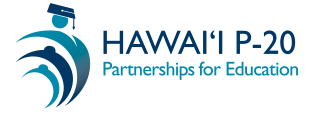Beginning Wednesday, August 20, Hawaiʻi P-20 Partnerships for Education (Hawaiʻi P-20) will launch the first in a series of its Virtual Financial Aid Workshops to assist with Hawaiʻi high school students’ postsecondary education planning. All events are free of charge and are available to all families regardless of where the student plans to attend college.
Virtual Financial Aid Workshops will be held via Zoom on Wednesdays from 6:00 – 7:30 p.m. from August 20 through October 1. Attendees will learn how to access more than $150 billion in grants, loans, and other government funding in addition to more than $70 million in scholarships awarded specifically to Hawaiʻi students annually. Registration is open now at CollegeIsWithinReachHawaii.
“Now is the time for high school seniors to explore the various funding sources that are available to assist in reducing the cost of their postsecondary education,” said Frank Green, Financial Aid and FAFSA Outreach Specialist for Hawaiʻi P-20. “Attending college in Hawaiʻi can be affordable. Scholarships and grants are available for two- and four-year colleges, trade and vocational schools, and can cover expenses from tuition, books, transportation, and beyond and we want to make sure all Hawaiʻi students have access to as many funds as possible.”
Federal Student Aid (FSA) has announced that the Free Application for Federal Student Aid (FAFSA) for the 2026-2027 award year will become available October 1. During this time families should create their personalized FSA ID, which is the required login and the first step to complete the FAFSA, in addition to preparing any additional documentation and financial information necessary to ensure they can complete and submit the FAFSA as early as possible.
“We encourage all students to complete the FAFSA for each school year they are seeking financial aid regardless of your family income, and local help is available to guide you through the process,” said Green. “Many scholarships and grants require FAFSA completion, so don’t leave money unclaimed and plan to complete your form when it becomes available October 1.”
Families across the state are invited to send any questions about the college planning process, financial aid, or the FAFSA by emailing FAFSA@Hawaii.edu. All emails will be answered within 24 hours by a local financial aid specialist.
For a complete listing of upcoming college planning webinars to include November Virtual Scholarship Workshops, visit CollegeIsWithinReachHawaii.
